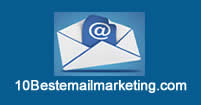Email marketing is a powerful tool that allows businesses to establish direct communication with their target audience. By leveraging the power of email, you can effectively promote your products or services, build brand awareness, drive customer engagement, and even increase sales. In this article, we will explore the strategies and best practices you need to know to harness the full potential of email marketing for your business.
What is Email Marketing?
Email marketing refers to the use of email to promote products or services and establish a relationship with potential and existing customers. It involves sending carefully crafted emails to a targeted audience, with the goal of driving customer action and generating positive business outcomes.
Building Your Email List
Before you can start using email marketing to promote your business, you need to build a robust email list. Here are some effective methods to increase your subscriber base:
- Opt-in forms: Place opt-in forms strategically on your website, allowing visitors to subscribe to your mailing list. Offer an incentive, such as a discount or exclusive content, to encourage sign-ups.
- Social media: Leverage your social media presence to promote your email newsletter. Direct your followers to a landing page where they can sign up for regular updates.
- Offline events: Collect email addresses from interested individuals at trade shows, conferences, or other offline events. Offer a sign-up sheet or a digital QR code.
- Content upgrades: Offer valuable content, such as eBooks or guides, in exchange for email addresses. This strategy not only provides immediate value but also demonstrates your expertise and builds trust.
Crafting Compelling Emails
Once you have built a strong email list, it's crucial to create compelling and engaging emails that capture the attention of your subscribers. Here are some essential tips for crafting effective emails:
- Subject lines: Create intriguing subject lines that compel recipients to open your email. Make them concise, personalized, and avoid spam trigger words.
- Personalization: Address your subscribers by their first name to create a personalized experience. Segment your email list based on demographics, interests, or past interactions for targeted messaging.
- Engaging content: Focus on delivering valuable and relevant content in your emails. This can include educational articles, product updates, special promotions, or exclusive offers.
- Call to action: Clearly state the action you want your subscribers to take, such as making a purchase, signing up for an event, or sharing your content on social media. Use compelling and actionable language to encourage conversions.
- Mobile optimization: Ensure that your emails are mobile-friendly, as a significant percentage of users access their inbox on smartphones. Use responsive templates and test your emails across different devices and email platforms.
Automating Your Email Campaigns
One of the significant advantages of email marketing is the ability to automate your campaigns. By setting up automated workflows, you can deliver targeted and timely messages to your subscribers. Here are some key automated email campaigns to consider:
- Welcome series: Send a series of emails to new subscribers, introducing your brand, sharing valuable content, and encouraging further engagement.
- Abandoned cart recovery: Follow up with customers who have abandoned their online shopping carts. Offer incentives or discounts to entice them to complete their purchase.
- Birthday or anniversary emails: Celebrate special occasions with your subscribers by sending personalized emails and exclusive offers on their special day.
- Re-engagement campaign: Target inactive subscribers with a re-engagement campaign, offering them incentives or asking for feedback to reignite their interest in your brand.
Analyzing and Optimizing Results
To make the most out of your email marketing efforts, it's essential to track and analyze your results. This allows you to identify what works and optimize your future campaigns. Here are some metrics to focus on:
- Open rate: Measure the percentage of recipients who open your emails. A higher open rate indicates that your subject lines and sender reputation are effective.
- Click-through rate: Track the percentage of recipients who click on links within your emails. This metric helps you evaluate the relevance and effectiveness of your content and calls to action.
- Conversion rate: Monitor the number of subscribers who take the desired action, such as making a purchase or signing up for a webinar. This metric directly reflects the success of your email campaign in generating conversions.
List growth rate: Measure the rate at which your email list is growing. A healthy growth rate indicates that your strategies for acquiring new subscribers are effective.
In conclusion, email marketing is a valuable tool for promoting your business and establishing a strong connection with your target audience. By building a quality email list, crafting compelling emails, automating your campaigns, and analyzing your results, you can maximize the effectiveness of your email marketing efforts and achieve significant business growth.
